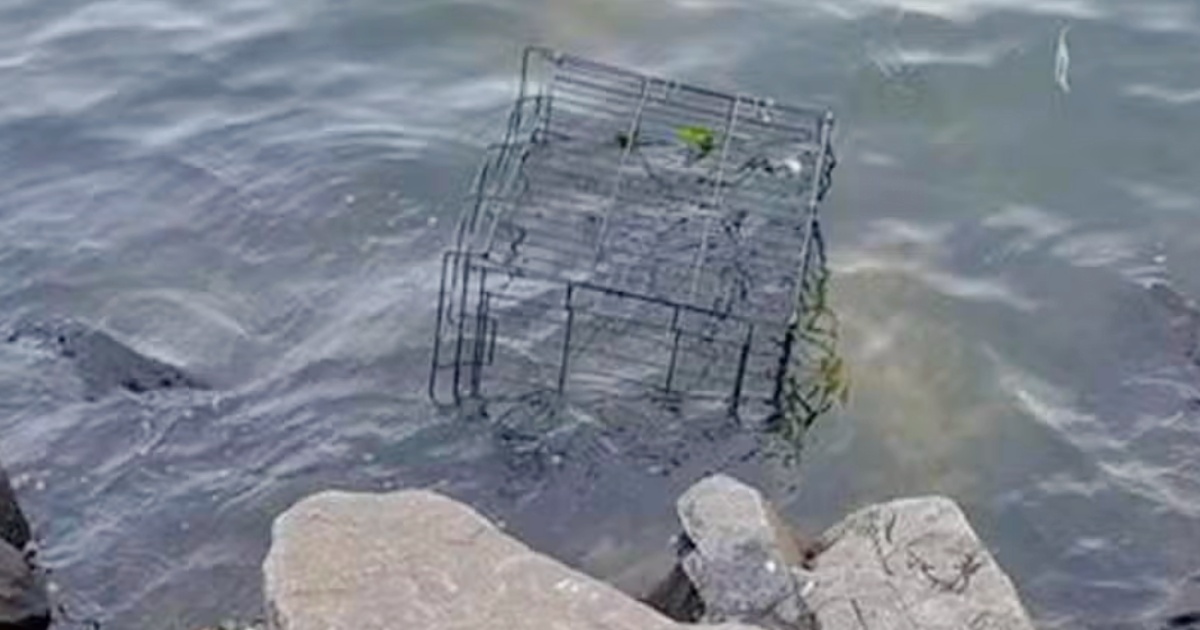Fish can be a healthy treat for your dog when you prepare it safely and in the right amount. Many top dog foods already use fish for lean protein. You can also cook fish at home with your vet’s OK. Cooked fish is easy on your dog’s stomach and gives key vitamins and minerals for strong bones, a shiny coat, and good energy.
If your dog has allergies or a sensitive tummy, fish can act as a novel protein. This means it may help when chicken or beef cause itchiness or upset bellies. Fish also brings omega-3 fats that support skin health and help fur look its best. Ready to learn how to add fish to your dog’s meals safely and happily? Let’s dive in!
Can Dogs Eat Fish?
Yes, dogs can eat fish—as long as it’s fully cooked, deboned, and served plain. Fish often serves as a novel protein, which means your pup hasn’t eaten it before and is less likely to trigger food allergies or sensitivities. This lean, easily digestible protein also delivers omega-3 fatty acids and key vitamins to support skin, coat, and joint health, making it a smart choice for dogs with common protein intolerances.
What Are the Benefits of Fish for Dogs?
Fish is a great option for dogs, especially if they have food allergies or sensitivities. It offers a unique protein source that’s less likely to cause reactions compared to more common meats like chicken or beef.
One of the biggest benefits of fish is that it’s packed with omega-3 fatty acids. These healthy fats are important for keeping your dog’s coat shiny and skin healthy. They can help reduce dryness and irritation, leaving your pup with smooth, glossy fur.
But omega-3s don’t just benefit the coat – they also have anti-inflammatory properties. This can be particularly helpful for dogs dealing with conditions like arthritis or digestive issues, as they support overall comfort and mobility.
And don’t forget about the fish skin! It’s full of collagen, a protein that’s great for maintaining strong bones and healthy skin. Collagen helps support joint health in older dogs, while also keeping their skin flexible and helping it heal faster.
Which Types of Fish Can Dogs Eat?
Adding fish to your dog’s diet can be a healthy choice, but it’s important to pick the right types and prepare them safely. Smaller, younger, wild-caught fish are generally lower in mercury and parasites, making them a safe, nutritious option for your dog.
Safe Fish for Dogs
There are several types of fish that are safe for dogs to eat. These fish are low in mercury and have a lower risk of parasites. Some good options include:
- Whitefish
- Flounder
- Salmon
- Herring
- Catfish
- Cod
- Whiting
- Canned light tuna (packed in water)
These fish, when served plain (cooked, deboned, and unseasoned), provide high-quality protein and healthy omega-3 fatty acids without any harmful toxins.
| Whitefish, Flounder, Cod | Mild flavor; low mercury |
| Salmon, Herring | Rich in omega-3s for coat and inflammation support |
| Catfish, Whiting | Lean protein; easy to digest |
| Canned Light Tuna (in water) | Convenient; lower mercury than albacore |
Can Dogs Eat Sardines?
Yes! Sardines are small fish that naturally contain low levels of mercury. They’re packed with omega-3 fatty acids, vitamin D, and protein, which help boost your dog’s immune system and keep their coat shiny.
How to serve safely:
- Choose plain, cooked sardines (fresh, frozen, or canned), packed in water with no added salt, oil, or seasonings.
- Look for the Marine Stewardship Council (MSC) blue label to ensure the sardines are sustainably caught.
- Always remove bones by flaking the fish with a fork before serving.
Can Dogs Eat Tilapia?
Tilapia can be a healthy, low-calorie option for your dog when prepared correctly. It’s high in protein, vitamin D, and potassium. However, it also contains phosphorus, which could be a concern for dogs with kidney issues.
Tips for safe tilapia feeding:
- Always cook tilapia thoroughly and remove the skin and bones.
- Choose U.S.-grown or locally regulated tilapia to avoid contamination from farm-raised fish.
- Serve tilapia plain, without any seasoning or oils.
Can Dogs Eat Lobster?
Lobster can be enjoyed by dogs in small amounts as an occasional treat. It offers protein, zinc, iron, and omega-3 fatty acids, but it’s also high in sodium, cholesterol, and iodine. So, it’s important to feed lobster in moderation.
Best practices for feeding lobster:
- Completely remove the shell to avoid choking or injury.
- Boil or steam the lobster meat without any butter, garlic, or seasoning.
- Limit servings to just a few small bites.
- Consult your vet before introducing lobster, especially if your dog has a history of pancreatitis or is sensitive to salt.
Key Takeaway
Fish can be a great addition to your dog’s diet, providing essential nutrients and variety. To keep your dog safe, always choose smaller, wild-caught fish, cook them thoroughly, and remove any bones or shells. Skip the oils and seasonings, and serve the fish plain. By following these simple guidelines, you can make mealtime both safe and tasty for your furry friend.
Types of Fish That Aren’t Safe for Dogs
While fish can be a great treat, some types pose hidden risks. These fish tend to be larger, older, or farmed in ways that raise safety concerns. Keep your pup healthy by avoiding:
- Shark
- Tilefish
- Swordfish
- King Mackerel
- Albacore Tuna (canned)
Why These Fish Are Risky
Larger, long-lived fish have more time to collect mercury and other heavy metals in their bodies. They can also carry parasites in their skin, muscles, and organs. Even a small portion can add up, putting your dog’s health at risk over time.
Watch Out for Farm-Raised Fish
Fish raised in poorly regulated farms may be exposed to antibiotics, dyes, and other chemicals. These substances can remain in the fish’s flesh when it reaches your kitchen. If you choose farm-raised fish:
- Pick brands with clear, third-party inspections.
- Look for labels that mention responsible farming practices.
Actionable Tips
- Always check the fish label for species and source.
- Choose wild-caught options from well-regulated waters.
- Skip any fish not on your vet’s “safe” list.
By steering clear of these riskier fish and choosing trusted sources, you can keep your dog’s meals both tasty and safe.
Can Dogs Eat Raw Fish?
Feeding raw fish to dogs may seem natural, but it carries hidden dangers. The American Veterinary Medical Association advises against raw or undercooked fish for dogs of any age, including puppies and pregnant females. Here’s why—and how to safely prepare fish your dog can enjoy.
Why Raw Fish Is Risky
Raw fish can hide parasites in its skin, muscles, and organs. These little hitchhikers—like tapeworms and flukes—can make your dog sick. If the fish isn’t kept cold enough or isn’t cooked fully, bacteria such as Salmonella, Listeria, and Clostridium can multiply. These germs can harm your dog and pose a risk to your family, too.
Always Cook Fish Thoroughly
To keep your dog safe, cook fish all the way through—just as you would for yourself. That means no pink spots and an internal temperature of at least 145°F (63°C). Follow these simple steps every time:
- Choose plain fish fillets or steaks.
- Rinse under cold water and pat dry.
- Bake, steam, or poach with a light mist of water—no oil.
- Flake apart and remove every bone before serving.
Skip any seasoning, sauces, or fats. Garlic, onion, butter, and heavy oils can upset your dog’s tummy or cause serious issues like pancreatitis.
Fried Fish? Better Skip It
Fried fish is fully cooked, but the crunchy coating and added fats spell trouble. The extra oils and butter can trigger vomiting, diarrhea, or even pancreatitis. Keep fried fish for your plate—your pup will thank you for a plain, healthy alternative.
Fish Sticks Are a No-Go
Breaded fish sticks pack in salt, fats, and empty calories. These ingredients can upset digestion and lead to pancreatitis. If you want to share, flake out the fish from inside the breading—discard the coating entirely.
Handling Fish Skin and Bones
- Fish Skin: Raw skin can carry parasites and germs. Dried, plain fish-skin treats are safe only if scales are fully removed and no seasonings or oils are used.
- Bones and Fins: Never feed uncooked heads, tails, bones, or fins. Splintered bones can scratch or even puncture the throat, stomach, or intestines and pose choking hazards.
If your dog drools excessively, paws at the face, or gags after fish, a bone fragment may be stuck. Seek veterinary care right away.
Risks of Feeding Fish to Dogs
Fish can be a healthy treat for your dog, but it’s important to serve it the right way. Some ways of preparing fish or certain ingredients can cause health problems for your pet.
1. Too Much Oil and Pancreatitis
Fish cooked with too much oil can be too fatty for your dog’s stomach. This can lead to pancreatitis, which is an inflammation of the pancreas. Pancreatitis can start with mild symptoms, like vomiting or diarrhea, but it can quickly get worse, causing stomach pain, fever, and tiredness.
Why it happens: High-fat meals put stress on the pancreas. This causes it to release digestive juices too soon, which can cause inflammation.
Signs to watch for: Vomiting, diarrhea, loss of appetite, a hunched back (which shows stomach pain), and low energy.
What to do: Cook fish by steaming, baking, or poaching it with little or no oil. If you think your dog has pancreatitis, call your vet right away.
2. Seasonings and Toxic Ingredients
Some seasonings are dangerous for dogs. Garlic is especially harmful. It can damage your dog’s red blood cells, leading to weakness, fast breathing, and pale gums.
- Common harmful seasonings: Garlic powder, onion powder, chives, and seasoning mixes with Allium spices.
- Why it matters: What seems like a tasty addition for you can hurt your dog. Even small amounts of these seasonings can cause problems.
- What to do: Always serve plain, unseasoned fish to your dog. If you want to add flavor, try plain pumpkin puree or fresh parsley (both are safe in small amounts).
By following these tips, you can safely share fish with your dog while keeping them healthy and happy!
Can Puppies or Pregnant Dogs Eat Fish?
Introducing fish to growing puppies or pregnant dogs can boost their protein and omega-3 intake—but it must be done carefully. Always check with your veterinarian before adding fish to your pup’s or expectant mom’s menu.
Why Fish Can Help
- Extra protein supports puppy growth and fetal development.
- Omega-3 fatty acids help brain and eye health in puppies and support a healthy pregnancy.
Safety First
To keep fish safe for puppies and pregnant dogs:
- Clean and debone every piece thoroughly.
- Cook fully—no pink inside.
- Serve plain (no salt, oil, or seasonings).
- Offer in small amounts as a treat or mix-in, not as the main meal.
Light canned tuna (in water, not oil) can also be an occasional supplement—but limit it and rinse off any extra liquid.
How Much Fish Should Dogs Eat?
Fish portions depend on your dog’s size, health, and why you’re feeding fish (treat vs. dietary support). Use these simple guidelines for a healthy dog:
| Extra-small (2–20 lb) | 1 square | Yorkies, Chihuahuas, Pugs |
| Small (21–30 lb) | 2–3 squares | Beagles, Mini Aussies |
| Medium (31–50 lb) | 3–5 squares | Border Collies, Basset Hounds |
| Large (51–90 lb) | 5–9 squares | Labs, German Shepherds, Pit Bulls |
| Extra-large (91+ lb) | 9–10 squares | Saint Bernards, Great Pyrenees, Newfs |
- Puppies & Pregnant Dogs: Stick to the low end of the range and offer fish no more than 2–3 times per week.
- Medical Needs: Dogs with allergies or special diets may eat fish daily—only under veterinary guidance.
Always let your vet tailor portions for your dog’s age, weight, and health.
How to Add Fish to Your Dog’s Diet
- As an Occasional Treat
- Mix a few cooked, flaked fish squares into your dog’s usual food.
- Use frozen or canned (water-packed) fish thawed and rinsed.
- As Part of a Home-Cooked Meal
- Consult a veterinary nutritionist to balance protein, fats, carbs, vitamins, and minerals.
- Include other safe ingredients like rice, sweet potato, and steamed veggies.
- What to Exclude
- Bones, fins, head, tail, scales: These can choke your dog or puncture the digestive tract.
- Seasonings, oils, salts: Stick to plain fish to avoid GI upset or toxic ingredients.
Key Takeaway
Fish can be a healthy boost for puppies and pregnant dogs when cleaned, cooked, and served in the right portions. Work with your veterinarian to keep every mealtime safe and nutritious.




















 English (US) ·
English (US) ·